Government Mandates Transform Electronic Data Management
Read this informative guide on electronic document management for government agencies and learn more about NARA and the executive order M-19-21.
Government agencies in most democracies are expected to be transparent, efficient, and budget-conscious while keeping classified information confidential and secure. Achieving these goals with cumbersome paper documents can be challenging.
In 2018, the National Archives and Records Administration (NARA) of the United States introduced a directive to drive transformational change toward the modernization of government. Government guidelines to move federal agencies' record-keeping and business processes to fully electronic — or paperless — by the end of December 2022 are laid out in memorandum M-19-21, entitled Transition to Electronic Records.
What Is NARA?
Established in 1934 by President Franklin Roosevelt, NARA is an independent agency of the U.S. government. Its primary responsibility is to preserve, document, and provide access to the records of the nation.
Mission and Services
NARA's mission is to cover the entire lifecycle of records from creation to their ultimate use.
With archival locations in 17 states, NARA assists the public and federal agencies with reference and research services. Additionally, 16 Federal Records Centers (FRCs) make up a national network providing records storage, access, and disposition services to federal agencies.
Holdings
Some of NARA's significant holdings date back to 1775 — well before its establishment — and include the Emancipation Proclamation and early polar expeditions journals. Along with historical documents such as the Bill of Rights, the Declaration of Independence, and the Constitution, NARA also holds in trust many public records of ordinary citizens, including military records and immigrants' naturalization records.
NARA's mandate is to retain only those federal records that are judged to have long-term research value, are important to government workings, or provide information of value to citizens. These records typically add up to approximately 2 to 5 percent of all documents generated in any given year. Currently, NARA holds about 133 terabytes of electronic data plus the following hard copies:
- 10 billion pages of textual records
- 12 million charts, maps, and engineering and architectural drawings
- 25 million still photographs and graphics
- 24 million aerial photographs
- 300,000 reels of motion picture film
- 400,000 video and sound recordings
Electronic Document Management
In response to the specific need to manage, preserve, and provide access to the rapidly increasing number of electronic government records, NARA has developed the Electronic Records Archives (ERA). This body will keep essential electronic federal records accessible, preserved, and authentic for as long as they are deemed valuable.
The aforementioned memorandum M-19-21 describes the steps the government and NARA will take and their targeted deadlines to meet their electronic document management goal.
[Related: Understanding the Importance of Records Management]
What Is M-19-21?
M-19-21 is a signed executive order tabled by the U.S. Office of Management and Budget (OMB) for heads of federal executive departments and agencies. This directive establishes a government-wide action plan that mandates all records — both temporary and permanent — submitted by federal agencies to NARA after December 31, 2022 to be in electronic format.
M-19-21 directs all government agencies to transition to a fully electronic record keeping environment that complies with all records management laws and regulations by this date. To meet this goal, federal agencies will need to take the following steps:
- Ensure that all federal records include appropriate metadata and are created, kept, and managed in electronic formats.
- Create plans to close storage facilities for analog documents that are agency-operated and transfer those records to FRCs operated by NARA or commercial storage facilities, consistent with records management laws and regulations.
To ensure consistent policy and practices government-wide, M-19-21 consolidates prior OMB records management guidance requirements, therefore rescinding the following directives:
- OMB Memorandum M-12-18, Managing Government Records Directive
- OMB Memorandum M-14-16, Guidance on Managing Email
The first section of M-19-21 lays out implementation guidelines for government agencies and establishes targets by which all agencies adopt electronic record-keeping.
Implementation Guidelines for Agencies
Federal agencies will continue to maintain document management programs that comply with the Federal Records Act and its regulations and target the following deadlines.
December 31, 2019 was established as the date by which all federal agencies' permanent and temporary records were to be managed electronically as fully as is deemed possible. All email records must also continue to be managed in an electronic format.
By December 31, 2022, all federal agencies are to manage their permanent and temporary records with appropriate metadata solely electronically. After this date, NARA will not accept paper records, except where an agency has been granted an exception under procedures developed by NARA. Exceptions to the mandate to digitize analog records include the following situations:
- Where it would be burdensome to the public regarding cost due to time, effort, or resources expended
- Where the cost would exceed the benefit
- Where digitizing analog records should not occur for other reasons such as regulatory, statutory, or policy barriers
December 31, 2022 is the date by which all agencies that previously received an exception must close agency-operated records storage facilities and transfer temporary, inactive records to FRCs or commercial records storage facilities. After this date, agencies must store inactive documents eligible for transfer in commercial storage facilities.
Implementation Guidelines for NARA and OPM
NARA and the Office of Personnel Management (OPM) will take the following steps to assist all agencies in their transition to fully electronic document management.
On September 30, 2020, NARA issued updated guidance and regulations to answer commonly asked questions and clarify M-19-21. This bulletin also includes clear policies to allow agencies to digitize records originally created in analog formats, apply for exceptions, and dispose of analog originals where appropriate.
NARA will continue to store all analog records transferred to an FRC by December 31, 2022, until their disposition date. After that, NARA will accept the permanent records in their original (analog) format and appropriately dispose of the temporary records.
After December 31, 2022, agencies must digitize permanent analog records before transfer to NARA. NARA regulations and transfer guidance, including metadata requirements, must be followed in the digitization and transfer processes.
Creating, maintaining, and storing federal records in paper and other non-electronic formats takes thousands of hours and cost hundreds of millions of taxpayer dollars annually. The move to fully electronic records management in government represents a larger digital transformation strategy that requires an ecosystem of partners and solutions to make the transition.
Kodak Alaris has been working with government agencies on their digitization strategies and has a full suit of solutions to support the M-19-21 mandate.
[Related: The Road to Digital Transformation]
Insights and Case Studies
Understanding the Importance of Records Management
By Kara Rayburn, Global Manager, Portfolio Marketing & WebLearn why records management is crucial to the success of your business, and then get started with these three simple steps.
Guide to Going Paperless
The value of transitioning your enterprise into a digital world and how to do so
The Road to Digital Transformation
Paperless is possible, but do we really want it? See Quocira's research on our digital transformation progress.
Related solutions
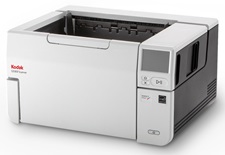
S2085f Scanner
85ppm | 300 Sheet ADF- Tough, high capacity A4 scanning
- Surepath™ intelligent document feed technology
- Integrated A4 flatbed
- Dual Light Illumination (DLI)
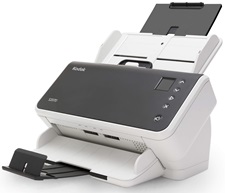
S2070 Scanner
70ppm | 80 Sheet ADF- Fast and powerful
- Built-in Active Feeding System (AFS)
- Embedded image processing
- Dual Light Illumination (DLI)
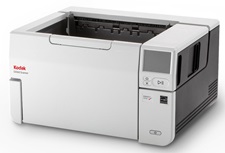
S3060 Scanner
60ppm | 300 Sheet ADF- Robust and Compact
- USB and wired Ethernet
- Surepath™ intelligent document feed technology
- Dual Light Illumination (DLI)

S3100 Scanner
100ppm | 300 Sheet ADF- Compact and powerful
- USB and wired Ethernet
- Surepath™ intelligent document feed technology
- Dual Light Illumination (DLI)
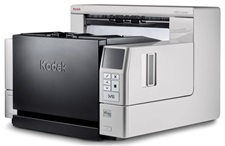
i4650 Scanner
145ppm | 500 Sheet ADF- Powerful and compact scanning
- Intuitive 3.5 inch (89 mm) color screen
- Surepath™ intelligent document feed technology
- Digital & physical Imprinting options
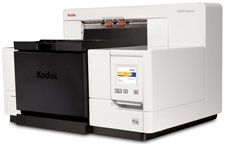
i5650 Scanner
180ppm | 750 Sheet ADF- Our fastest and most powerful desktop scanner
- Surepath™ intelligent document feed technology
- Unlimited duty cycle
- Optional pre & post imprinting
ABOUT THE ALARIS DIVISION OF KODAK ALARIS
Kodak Alaris is a leading provider of information capture and intelligent document processing solutions that simplify business processes. We exist to help the world make sense of information with smart, connected solutions powered by decades of image science innovation. Our award-winning software, scanners, and professional services are available worldwide and through our network of channel partners.
Partners
Privacy Notice | Legal / Site Terms | California Notice at Collection | Do Not Share My Personal Information
© 2024 Kodak Alaris Inc. TM/MC/MR: Alaris, ScanMate. All trademarks and trade names used are property of their respective holders. The Kodak trademark and trade dress are used under license from Eastman Kodak Company.


